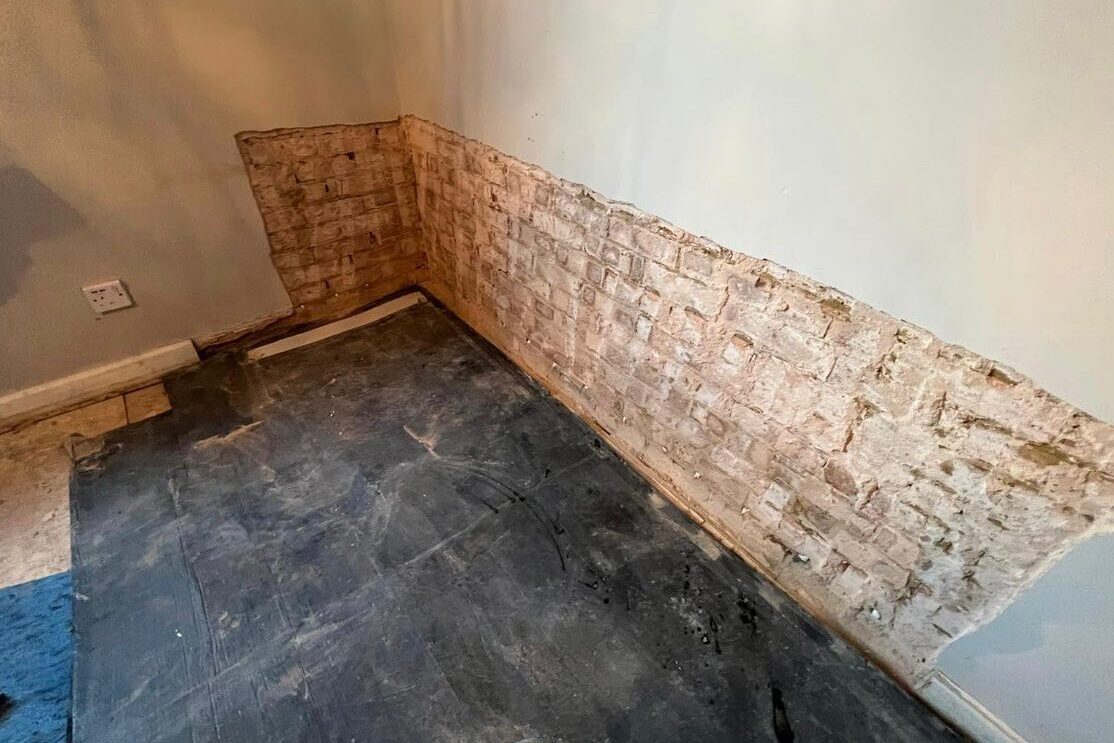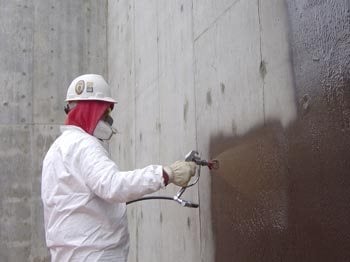Key differences rising vs. penetrating damp explained by a damp specialist newcastle
Key differences rising vs. penetrating damp explained by a damp specialist newcastle
Blog Article
Checking Out the Numerous Strategies and Solutions for Effective Damp Proofing
Dampness in structures poses considerable obstacles to both structural stability and interior air quality. Various techniques and services have actually emerged to combat this prevalent concern. From traditional damp-proof membranes to ingenious chemical therapies, each approach offers distinct benefits. Recognizing these alternatives is vital for reliable dampness control. Picking the ideal option depends on details structure conditions and demands, prompting further expedition into the most efficient damp proofing strategies readily available.
Comprehending the Reasons For Wetness
Dampness can arise from numerous resources, comprehending these causes is crucial for efficient removal. Commonly, moisture originates from three main resources: increasing wet, passing through moist, and condensation. Rising wet takes place when groundwater travels upwards with porous products, such as brick or rock, typically due to a lack of a reliable barrier (mould removal newcastle). Passing through wet is commonly brought on by external variables, including roof covering leaks, defective gutters, or damaged walls, permitting water to infiltrate a residential or commercial property. Condensation, on the various other hand, results from excess dampness airborne, usually worsened by bad air flow and temperature level differences, bring about water droplets basing on surface areas. Identifying these underlying problems is vital, as each kind of dampness needs a customized approach for remediation. Appropriate evaluation helps in establishing the most effective options, inevitably securing the architectural stability of a building and boosting indoor air high quality
Standard Damp-Proof Membranes

Chemical Damp-Proofing Solutions
Chemical damp-proofing options offer a cutting-edge method to stop dampness breach in structures. These methods usually entail the application of fluid chemicals that pass through stonework and create a barrier against increasing wet. Typically utilized chemicals consist of silanes, siloxanes, and other water-repellent representatives that respond with surface area products to develop a hydrophobic layer.The application procedure normally calls for boring holes into the wall surfaces, infusing the chemical remedy, and enabling it to heal. This approach is particularly helpful for older frameworks where conventional damp-proof membrane layers might be impractical. Furthermore, chemical damp-proofing can be much less disruptive and a lot more cost-effective than considerable restoration projects.While effective, these services depend upon proper application and environmental problems for peak efficiency. Normal maintenance and tracking are vital to guarantee the long life of the damp-proofing therapy. Overall, chemical damp-proofing represents a functional alternative for securing buildings versus moisture-related damage
Dental Caries Wall Surface Construction Techniques
Dental caries wall surface building techniques offer numerous benefits, particularly in moisture control and power performance. By integrating an air gap between 2 layers of masonry, these walls effectively mitigate water access while improving insulation. This combination not just shields frameworks from moisture but likewise adds to decreased energy usage.
Benefits of Dental Caries Walls
When taking into consideration effective damp proofing methods, the benefits of tooth cavity wall surfaces stick out prominently. Dental caries wall surfaces are composed of two separate layers, developing an air space that successfully decreases dampness penetration. This style decreases the threat of dampness, as the external wall works as a barrier versus rain and water ingress. In addition, tooth cavity wall surfaces improve thermal insulation, which contributes to power efficiency by lowering warm loss. They additionally give audio insulation, helping to produce a quieter interior setting. The air void permits for ventilation, which helps in moisture control and decreases the chance of mold growth. These advantages not only enhance the general convenience of a structure but also add to its longevity and structural stability.
Dampness Control Strategies
Efficient wetness control techniques are important in tooth cavity wall building and construction to assure long-lasting protection versus moisture. One primary approach includes the consolidation of weep holes, which assist in water drain from the cavity, avoiding build-up. Furthermore, making use of breathable membrane layers can assist manage wetness degrees while enabling entraped vapor to run away. Correct positioning of insulation is also critical, as it ought to not obstruct drain courses. Ensuring that the external fallen leaves of the dental caries wall are created with waterproof products boosts general sturdiness. Routine maintenance checks are vital to determine any blockages or damage early, guarding the framework's stability. Ultimately, a combination of these methods creates a robust defense versus dampness intrusion in tooth cavity walls.
Insulation and Power Efficiency
Insulation plays an important function in boosting power performance within dental caries wall surface construction. By including insulating materials, these walls create a thermal barrier that minimizes heat loss and minimizes power consumption. Effective insulation not only assists preserve a stable indoor temperature however likewise alleviates the risk of dampness, as it prevents condensation within the wall surface dental caries. Numerous strategies, such as making use of rigid foam boards or mineral woollen, can be used to accomplish excellent insulation efficiency. In addition, appropriate setup is necessary to guarantee that gaps and spaces are reduced, which can otherwise compromise power performance. Inevitably, a well-insulated dental caries wall contributes significantly to overall sustainability and decreases heating & cooling costs for homeowners.
External Damp Proofing Methods
Exterior moist proofing approaches are crucial for securing structures from dampness seepage. 2 reliable methods include the application of water-proof membrane layers and the installment of French drains. These services help alleviate water accumulation and maintain the integrity of structures.
Waterproof Membrane Layer Application
While different approaches exist for stopping wetness access, the application of waterproof membrane layers remains an extremely reliable external moist proofing strategy. These membrane layers are typically made from materials such as polyethylene, rubber, or customized bitumen, supplying a robust barrier against water penetration. The setup procedure entails using the membrane layer to the external surfaces of wall surfaces or structures, making sure full protection to stop leaks. Appropriate bond and securing at joints are important to taking full advantage of performance. Water-proof membrane layers can be applied in numerous types, including liquid finishes and sheet membranes, enabling flexibility based on the specific requirements of the structure. This method not only safeguards buildings from moisture yet likewise improves their durability and structural stability.
French Drain Setup
One reliable approach for managing groundwater and stopping wetness build-up around a building's foundation is the installation of a French drainpipe. This water drainage system is composed of a trench loaded with crushed rock and a perforated pipe that redirects surface water far from the structure. Appropriate setup requires careful preparation, making certain that the drainpipe slopes away from the structure to facilitate ideal water circulation. In addition, the place of the drainpipe is crucial; it must be placed in locations prone to merging or excess wetness. Regular upkeep, consisting of cleaning debris from the crushed rock and guaranteeing the pipeline stays unblocked, is vital for long-term performance. Eventually, a well-installed French drainpipe can substantially minimize the risk of water-related problems in structures and basements.
Inside Waterproofing Methods
Inside waterproofing approaches are crucial for safeguarding a building's interior from wetness seepage and prospective water damage. These methods usually entail the application of specialized products and techniques created to develop a wetness obstacle within the framework. One common strategy is using water resistant finishings or sealants on walls and floors, which protect against wetness from passing through surfaces.Additionally, mounting indoor water drainage systems, such as sump pumps, can properly take care of water buildup in cellars and crawl areas. An additional method includes the use of vapor barriers, which are set up to prevent dampness activity from the ground right into living spaces.Moreover, dealing with any kind of cracks or gaps in walls or foundations with proper sealers assures an extensive protection versus water breach. By executing these interior waterproofing approaches, homeowner can significantly decrease the danger of mold growth, structural damages, and other moisture-related issues. Appropriate execution of these methods is necessary for lasting defense and structure honesty.
Normal Upkeep and Evaluation Practices
Regular upkeep and assessment techniques are crucial for ensuring the long-term performance of wet proofing options in any type of building. Regular checks allow homeowner to determine early indicators of moisture breach, such as peeling off paint, mold development, and mildewy odors. These indicators can signify underlying problems that require instant attention.Inspections need to be performed at the very least every year, focusing on at risk locations like basements, crawl areas, and outside walls. Throughout these assessments, residential or commercial property proprietors must examine sealers, read more drain systems, and ventilation to verify they work correctly.Additionally, maintaining downspouts and gutters is essential, as stopped up systems can result in water accumulation near the structure. Executing a regular maintenance routine, along with timely fixings, can significantly expand the lifespan of moist proofing measures and safeguard the architectural honesty of the building. Proactive measures eventually add to the general health and security of the living environment.
Often Asked Inquiries
How Long Does Damp Proofing Normally Last?
The period of damp proofing effectiveness varies, usually lasting in between 20 to half a century. Factors such as application top quality, environmental conditions, and upkeep practices considerably influence the longevity of the damp proofing therapy.

Can I Damp Evidence My Home Myself?
The specific considered the usefulness of do it yourself damp proofing. With correct study and the appropriate materials, it is possible. They likewise recognized the significance of professional assistance to guarantee long-lasting effectiveness and prevent future concerns.
What Are the Indicators of Inadequate Damp Proofing?
Indicators of inadequate wet proofing consist of relentless mildewy odors, noticeable mold growth, peeling paint, wet spots on walls, and wood degeneration - mould treatment newcastle. Property owners ought to address these concerns promptly to stop further damages and health and wellness concerns
Does Damp Proofing Affect Indoor Air Top Quality?

Just How Much Does Professional Damp Proofing Price?
Professional wet proofing expenses differ significantly, normally ranging from $1,000 to $5,000 depending on the home's size, the degree of the damp problem, and picked methods. Each scenario requires a customized assessment for precise pricing. Commonly, moisture stems from three main resources: rising moist, passing through damp, and condensation. When thinking about reliable damp proofing techniques, the benefits of cavity walls stand out prominently. External moist proofing techniques are essential for securing frameworks from dampness seepage. While various methods exist for protecting against dampness ingress, the application of water-proof membranes remains an extremely efficient exterior wet proofing strategy. Indicators of ineffective damp proofing include consistent mildewy smells, noticeable mold and mildew development, peeling paint, wet spots on walls, and wood degeneration.
Report this page